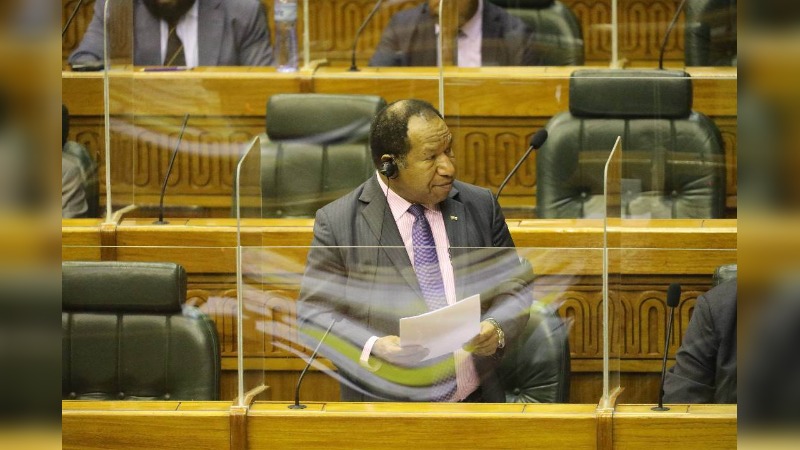The State owned power company- PNG Power Limited (PPL), is on the verge of insolvency, prompting the government to put together another rescue plan to pull it out of its dilemma.
The Minister for State owned Enterprise William Duma made this known in parliament today when presenting his Parliamentary Statement on the Rescue and Reform Plan Framework on PNG Power Limited, 2023.
Minister Duma said late 2022 the government, through trustee shareholder Kumul Consolidated Holdings (KCH), with the assistance and cooperation of PPL and other agencies, began preparing the foundations of the first phase of a rescue plan for consideration by the National Executive Council (NEC).
This rescue plan has been approved by the NEC, announced the minister.
Minister Duma added that the issues faced within PNG Power are legacy issues that have accumulated over time that had not be addressed fully by previous governments, and now the current government is taking steps to make sure the countrys only power company is up to standards and provides the service that it should for the people.
PPL has reached a crucial point where all financial indications show that the company is in danger of insolvency, and requires significant cost cutting and recapitalization. It has not made a profit since 2016 and has accumulated losses from 2013 totaling K593.4million. It owed about K882million to unsecured creditors at the end of last year, the minister revealed.
Based on the 2022 financial results, Minister Duma said PNG Power is averaging K76.9million in revenue a month and incurring K91million in costs, which is an untenable situation.
Over the past decade, revenue has grown by only 27.61 percent, from K735million to K938million, which costs have increased by almost 50 percent from K768million to K1.15million.
The minister went on to say that PPLs audited financial statements continue to be disclaimed, which signifies the view of external auditor that information is missing or does not exist and therefore, the auditor cannot provide an option on the accuracy of the account, which he said is the worst possible outcome from an external audit.
In addition to this, Duma said the carried end of year balances are not confirmed, which limits the ability of the PNG Power Board of Directors and management to understand the companys financial situation with confidence and to make informed decisions going forward.
Major contributing factors over the past 15 years that affected power system reliability, cost and accessibility include human capacity, aging infrastructure, an almost non- existent asset management program and a lack of capital investment in core assets,” Duma further added.
Moving forward, Minister Duma said PNG Power is now embarking on a comprehensive and far- reaching restructure, based on facts established by expert analysis that has continued over the past few months with a methodical approach to deal with very deep and complex issues that have been allowed to worsen for more than 20 years.
With support from treasury, PPL will execute a financial and technical turnaround. Corporate restructure is estimated to cost K26million, technical reform (engineering and retail) K155million, with contingency set at K30million.
Minister Duma announced that KCH, PNG Power and Treasury have successfully sourced K1.075billion in funding to support PPLs 15 year Power Sector Development Plan, consisting of ADB K720million, Australian Infrastructure Finance Fund for the Pacific K250million and the World Bank K105million.
The plan is for these funds to be released over the next 15 years, said the minister.
The PPL reform will focus on 8 key areas;
Organizational Efficiency
Optimizing People and Culture
Financial Management Strengthening
Business Re- Capitalization
Revenue Improvement
Service Reliability Improvement
Power Development Plan
Regulatory Contract Negotiation (Tariff Setting)
He said the corporate focus for the next six months will be stabilizing the balance sheet, cutting costs, instituting and Expenditure Control Committee, improving and tightening tender and procurement processes and right sizing the organisation.

